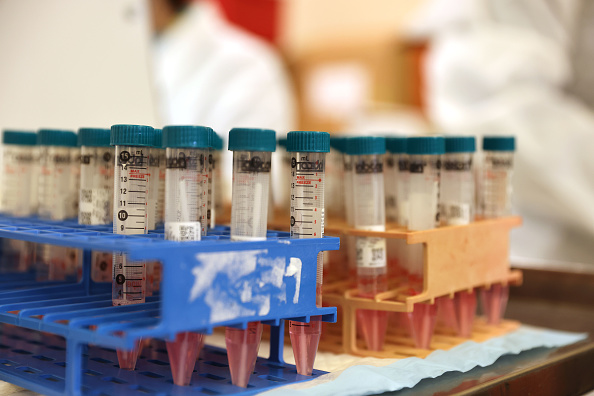There are four options for COVID-19 immunity protection in the United States after the Food and Drug Administration (FDA) granted an Emergency Use Authorization (EUA) for the first booster for Novavax in October.
Novavax, which uses a more traditional, protein-based approach to viral immunity, received an EUA in July, 18 months after the FDA gave emergency approval to the two inoculations using messenger RNA technology (Pfizer-BioNTech and Moderna shots), and one that delivers the virus’s DNA via a weakened version of another virus (Johnson and Johnson).
Anyone aged 12 years or older could get the Novavax two-dose series. The booster shot can be taken by adults six months after completion of the first shots.
Unlike the other vaccines, Novavax triggers the body’s immune system with a small piece of the virus itself, the SARS-CoV-2 spike protein, which is produced in insect cells. Similar technology is used in vaccines for shingles, hepatitis B, and human papillomavirus (HPV). AstraZeneca’s vaccine for COVID-19 is also protein-based and while it is available in 170 countries it was never approved for use in the United States.
‘Novavax More Adaptable’ More Adaptable’
Having another vaccine platform like Novavax and its booster couldn’t have come at a better time, said Raymond March, an assistant professor at North Dakota State University and research fellow at the Independent Institute, on The Heartland Daily Podcast.
“A novel virus often starts out very strong and can be very destructive,” said March. “When it mutates, it does so in a way to get around current immunization. It loses its oomph but becomes a lot more contagious. Novavax—because it is made from protein-based materials—is a lot more adaptable and amenable to sub-variants.”
Novavax has another advantage. It can be stored at higher temperatures than the mRNA vaccines which could make it more accessible in harder-to-reach communities.
America is fighting two new omicron subvariants, BQ 1 and BQ 1.1, and the World Health Organization has warned against new and even more threatening COVID-19 variants.
‘May Be Preferable’
Although there are more options now, all of the current COVID-19 vaccines are risky, says Jane Orient, M.D., executive director of the Association of American Physicians and Surgeons.
“Novavax may be preferable,” said Orient. “It is still a spike protein, but your own body doesn’t keep making it for who knows how long. We still don’t have long-term safety data and won’t for years. There have been no tests of vaccines versus early or prophylactic treatment.”
Ivermectin and hydroxychloroquine are two generic drugs that have been used safely for years and many physicians found them to be effective treatments against COVID-19. There are also newer early treatment drugs like Paxlovid.
Orient says the performance of the vaccines has been disappointing.
“With new variants, this vaccine [Novavax] may be like the flu vaccine—at best 30 percent efficacy in some years,” said Orient. “Why take an as-yet-unknown risk for an unimpressive benefit?”
Late In Coming
Novavax, based in Maryland, developed its COVID-19 vaccine early during the pandemic, in 2020, but in the interest of getting a vaccine to market quickly, the federal government’s Operation Warp Speed (OWS) focused on mRNA technology.
OWS removed regulatory obstacles and provided financial guarantees so that manufacturing development could begin before the vaccine demonstrated efficacy and safety.
Focusing on one technology might have been the fastest course to get a vaccine out while the virus was at its most destructive point, but it was a risky approach, says March.
“When you put all your eggs in one basket, like having vaccines only with mRNA, you risk the problem of when the virus mutates and you need a new vaccine to address a different strand,” said March. “When that happens, you have government policies focused on this kind of vaccine which may not be what the pandemic needed or what we need to address COVID going forward. We have a lot more strains that can cause harm and we’re not sure what that is going to look like going forward.”
‘Free the Market’
The experience with COVID-19 has provided lessons regarding how we should respond to a public health crisis, says March.
“There were a lot of mistakes and some very serious—which cost lives, livelihoods, and made public health worse in some instances,” said March. “There are two lessons we should remember when dealing with widescale emergencies like this. First, it is generally better to free the market than control people. Instead of going into lockdowns, and protective measures and trying to restrict economic and personal freedom, it is generally better to deregulate and let the supply side of the market, the innovation of medical professionals or scientists, try to address the problem.”
COVID-19 testing was one area where the private sector came forward quickly when regulators got out of the way. March says while the Moderna and Pfizer vaccines have helped and were developed at record speed, it is short-sighted to pick winners and losers.
“We can’t expect a policy to possibly predict what COVID-19 or any pathological virus might be three or four years in the future,” said March. “Only the market can possibly anticipate that.”
AnneMarie Schieber (amschieber@heartland.org) is the managing editor of Health Care News.





















